"It was our purpose to launch here an institution which would endure for centuries, and which would comand respect and quicken the pride of succeeding generations."
—Dr. Charles E. Diehl
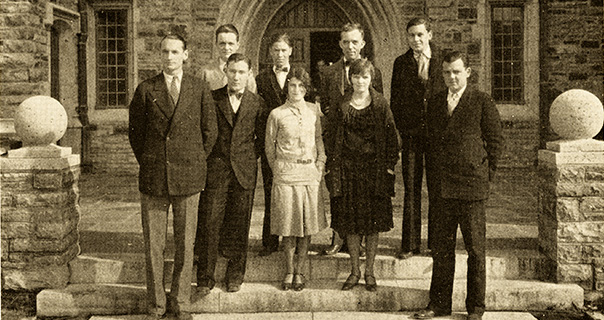
1925 - 1935
President Charles Diehl supervised every detail in the building of the new Memphis campus, selecting the location, the architects, and the design style—Collegiate Gothic—as well as negotiating contracts and hiring the new faculty. On September 24, 1925, the first group of students attended class at Southwestern, The College of the Mississippi Valley. Four hundred and six students and 16 faculty (including seven who made the move from Clarksville) walked into a Collegiate Gothic building that laid the foundation for the beautiful campus we have in 2025.
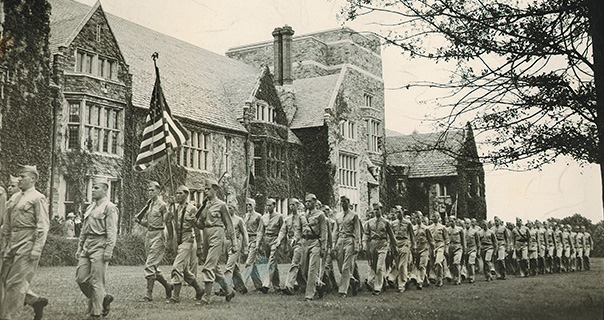
1936 - 1945
The college continued to grow and found even more support from the city of Memphis, which helped launch a capital campaign to sustain the momentum. During World War II, the campus transformed into a training ground for the Army Specialized Training Program, with the 13th College Training Detachment aircrew stationed in Memphis. The college also implemented programs that became the buildings blocks for a modern Rhodes education, including launching a broad survey curriculum bringing together faculty in a comprehensive, interdisciplinary program. Students today will recognize the course by its current name, The Search for Values in the Light of Western History and Religion (or, simply, Search).
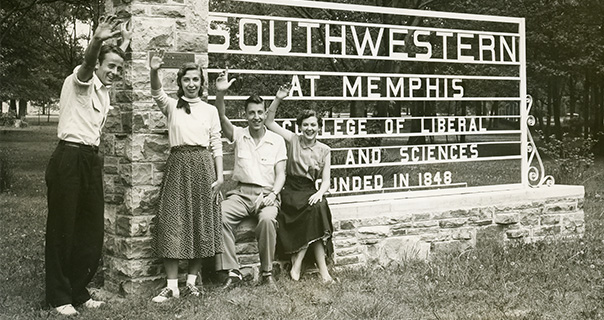
1946-1955
When Diehl retired, the Board unanimously selected Dr. Peyton Nalle Rhodes to succeed him. During his 16-year tenure at the helm, his major accomplishments include the construction of 10 buildings on campus, increased enrollment, growth in assets from $5 million to $14 million, and increased buy-in for the college’s mission from both organizations and the church. Professor of religion Dr. Laurence F. Kinney, meanwhile, was hard at work encouraging students to get out and engage with the community through service and volunteer work. Today, through partnerships with more than 100 community partners, 80 percent of students provide community service in the Laurence F. Kinney Program.

1956-1965
Reflecting a growing student body, from 1956 to 1962 eight landmark structures popped up on campus, including Ellett Hall, Trezevant Hall, Margaret Townsend Hall, Bellingrath Hall, Gooch Hall, and the Moore Moore Infirmary. Perhaps the most eye-catching addition came with the dedication of Halliburton Tower, named for famed Memphian explorer and travel writer Richard Halliburton. As the Civil Rights movement was picking up steam around the country, the student body embraced this progressive change, with many members of the Southwestern community electing to participate in “kneel ins” alongside Black and white students from local high schools and colleges, in support of the racial integration of local churches.

1966-1975
Memphis became the center of the Civil Rights movement in the South, and Southwestern students marched in support. The college strived to improve race relation on campus, and the Black Student Association was founded. Moving with the times, women’s dorm curfews were no more, chapel attendance became optional, dinner dress became more casual, and Saturday classes were abolished. Women’s Studies and Black Studies courses were both added to the curriculum. The campus continued to expand, notably with the additions of Frazier Jelke Science Center and the Physics Tower. The Southwestern at Oxford summer program, later British Studies at Oxford, was created. President James H. Daughrill Jr. took over the reins in 1973.

1976-1985
In 1984, the school officially became Rhodes College under the guidance of President Daughdrill, and board chairman Frank M. Mitchener, Jr. said, “We do not honor a benefactor in the traditional sense; rather, we honor one who has given his life to Southwestern.” Southwestern at Memphis had marked the institution as one of the top regional colleges, but the work put in by President Rhodes, and his eventual successors, made it into the national contender it is today. Construction continued apace this decade, and the iconic statue of President Diehl, created by noted Memphis sculptor Ted Rust, found its home in front of Burrow Hall.

1986-1995
College enrollment continued to grow, and Rhodes bolstered its relationship with Memphis further, as the Excellence in Teaching Program saw Rhodes establish professorships with large local business such as Buckman Laboratories and FedEx. The Kinney Program continued to thrive, and the Bonner Scholars program launched in 1992, promising financial assistance to students who connected their academic interests and talents to civic engagement and service-based learning. Students worked with a local church to open Souper Contact, now the longest-running student-led soup kitchen in the country. The first Rhodes in Europe program launched, and today, 65 percent of Rhodes students take advantage of overseas learning opportunities, many through the Buckman Center for Global Engagement.
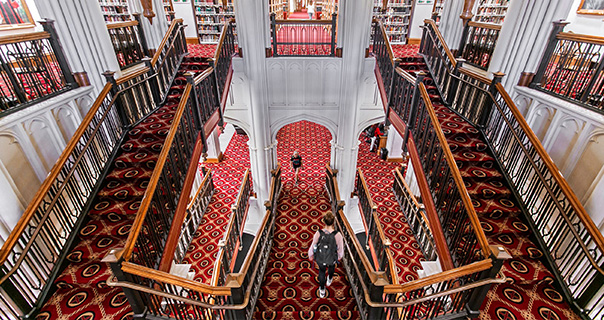
1996-2005
President William E. Troutt arrived in 1999, sporting his trademark red bowtie. Troutt and the board of trustees adopted the Rhodes Vision in 2003, a set of guiding principles that set the college on its path to today: Student Access, Student Engagement, Student Learning, and Student Inspiration. Internships, student research, study-abroad opportunities, and community service efforts all strengthened under the new guidelines, while endowed faculty chairs and support, additional community partners, and fellowships strengthened the academic curriculum. The St. Jude Summer Plus Program is formalized in 2001, offering students research opportunities alongside world-class doctors and medical facilities. The campus continued to grow, notably adding the Paul Barret, Jr. Library and the Bryan Campus Life Center.
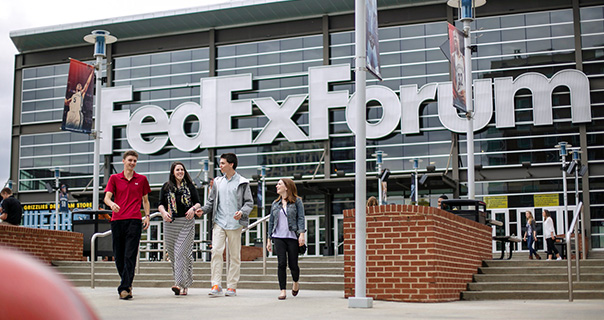
2006-2015
Memphis continued to thrive, with the addition of an NBA team and world-class organizations such as FedEx and ServiceMaster offering more opportunities for Rhodes students to engage with the community. The Mike Curb Institute for Music launched to connect students with the city’s musical legacy, offering partnerships with notable recording studios; Dr. Russ Wigginton ’88, now president of the National Civil Rights Museum, launched Crossroads for Freedom, a digital archive of primary sources, documents, and interviews detailing Memphis’ history. To recognize high-achieving students who grew up in Memphis, the Clarence Day Scholarship debuted to help mold them into future leaders. Rhodes established the Memphis Center, envisioned as an all-access hub for collaboration between Rhodes and its many community partners.
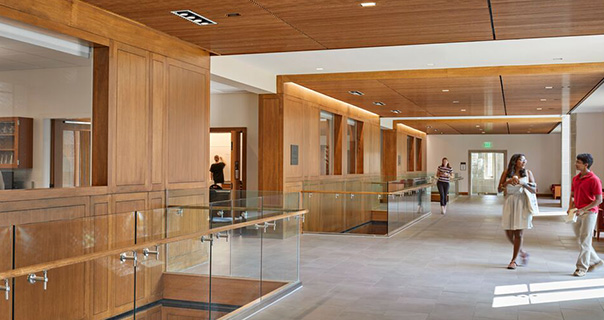
2016-2025
In July 2017, Dr. Marjorie Hass became the college’s first female president. State-of-the-art Robertson Hall opened in 2017, housing chemistry and biology faculty and labs, and a new residence hall opened in the spring of 2022. In July 2022, Rhodes welcomed Jennifer M. Collins as its 21st president, who quickly coordinated a task force to rethink the structure of community engagement across campus. This resulted in The Lynne and Henry Turley Memphis Center for Community Engagement, which continues to be a testament to Rhodes’ commitment to the wider Memphis community, acting as a managing hub for the 260 organizations that students, faculty, and staff partner with off-campus. In 2024, the campus, along with local and regional alumni, celebrated the dedication of the National Pan-Hellenic Council Plaza.